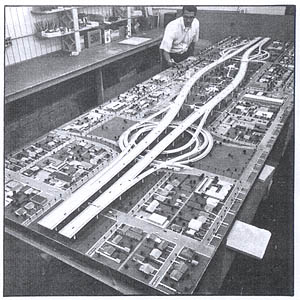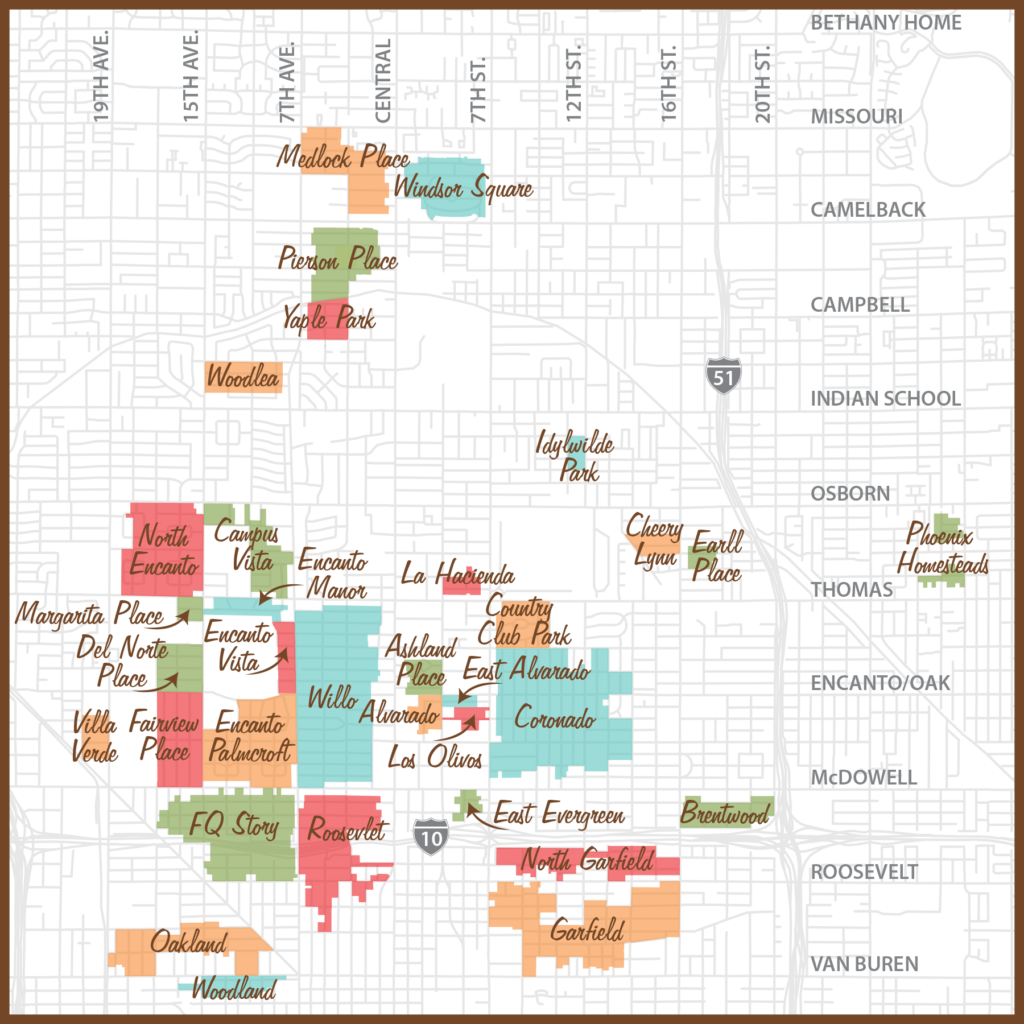The History of Our Historic Districts
Prior to the 1970s, there wasn’t much love for our city’s historic assets. This was the era of “urban renewal” when cities across the nation were retrofitting their downtown areas with new, wider streets, shiny buildings and large-scale convention centers. Phoenix was no exception, and one only need venture south of downtown to see what is left of the barrios the city decimated in the 1960s and 70s.

In honor of the 1976 Bicentennial, the city of Phoenix designated Heritage Square — the oldest existing residential block in Phoenix — as a historic district. That same year, a group called the Arizona Past and Future Foundation was established to fight proposed I-10 plans that would destroy many historic homes and archaeological sites in the city. While the Foundation wasn’t successful in stopping the destruction completely, this group’s activism formed the basis for the city’s future conservation efforts by bringing much-needed attention to the plight of historic buildings in the city’s core.
As a result of a new-found understanding of what the city lost and could lose in the future, the city adopted a Conservation District Ordinance and completed a historic properties inventory in 1979. By 1984, Roosevelt and Encanto-Palmcroft were designated as the first historic districts and Terry Goddard (Phoenix mayor from 1984 – 1990) assembled an Ad Hoc Committee on Historic Preservation to make recommendations to the city for a preservation philosophy and roadmap for saving threatened Phoenix history.
The following two decades saw the establishment of the Phoenix Historic Preservation Office, creation of HP overlay zoning and the Phoenix Historic Register, and designated a total of 36 residential and nine non-residential districts as historic plus 230 individual properties. The city worked diligently from 1986 to 2006 to identify and designate the 36 historic districts, but their efforts stalled in 2007 with the passing of Prop 207.

Prop 207, The Private Property Rights Protection Act, was a state-wide ballot measure that passed in 2006. The goal of the legislation was to prohibit municipalities or the state from taking or diminishing the value of private property without just compensation. The resulting application of the law meant that in order to designate a new historic district, the city would have to obtain 100% approval by property owners in said district — including a signed Prop 207 waiver. Needless to say, it became nearly impossible for the city to convince 100% of homeowners that this did not constitute a “taking” requiring just compensation, especially since it could be argued that the historic overlay zoning might diminish property values by restricting use of or changes to a property.
All hope is not lost, however. Even though the city will not initiate the designation of any new residential historic districts, an application can still be made by the neighborhood itself. Last year, Westwood Village and Estates (roughly from Thomas Rd. north to Indian School and from 19th Ave. west to 24th Ave.) became the newest historic district after a successful effort by their neighborhood association to gather the necessary support from homeowners and submit a well-researched application to the city.
It’s interesting to me how a voter initiative with the goal of protecting the public from having their properties ceased could have such a cooling effect on historic preservation efforts in Phoenix. Even so, we are seeing attempts by mid-century neighborhood associations to apply for historic designation, and I hope they succeed. Historic preservation is an ongoing process, and it is encouraging to see private citizens take over when public options are no longer available.